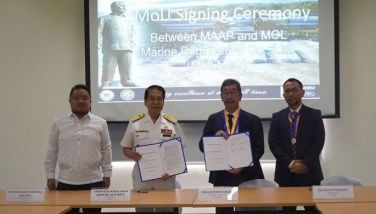Josefina C. Fonacier, UP math icon
Not many Filipinos can claim having been born in Corregidor, the tadpole-shaped island fortress at the mouth of Manila Bay. But before proceeding with my article, let me devote a few notes on the island. After all, two weeks ago, May 6, marked the fall of Corregidor to Japanese forces in 1942.
The story goes that during the Spanish era, the island served as a penitentiary and correctional institution by the authorities; hence, the name El Corregidor. It also served as a customs checkpoint for incoming foreign trading vessels. When the Americans took over, the island was organized as a military reservation with the idea of making it part of the harbor defenses of Manila, presuming that an enemy force would approach from the sea just as Commodore George Dewey did in May 1898. Unfortunately, during the Pacific war, Japan carried out a land invasion that started in Pangasinan.
The island with a land area of 900 hectares was divided into four sections: (1) Topside, with army headquarters, a parade ground, officers’ quarters, officers’ club, a 9-hole golf course and swimming pool; (2) Middleside, with barracks for non-commissioned officers, enlisted men, a hospital and two schoolhouses; (3) Bottomside, the low portion of the island connecting its tail and head; and (4) Tailside, the remainder of the island with a short airstrip for light aircraft. Today the ruins on the island serve as military memorials to American, Filipino and Japanese forces who served and lost their lives on the battlefield. Corregidor is one of the most important historic and tourist attractions of the country.
* * *
Josefina Caluya Fonacier was the eldest child of Pio Caluya, one of the few Filipino commissioned officers serving in the US Army at that time. “Manang Josephine,” as all of us knew her, was born in a US Army hospital facility in Corregidor on March 6, 1925, during a tour of duty of Capt. Caluya on the island as part of the US Army’s Philippine Division. For much of their young years, Josephine and her siblings had in Corregidor one big playground of forested areas and ravines filled with marching soldiers with rifles and cannons located inside tunnels. The family quarters located on Topside gave them a panoramic view of the waters of Manila Bay and the surrounding provinces.
When war broke out, Caluya’s unit became one of the US Army’s first frontline troops sent into combat in Bataan. After the surrender, as a prisoner of war, he survived not only the Death March but also the horrible conditions at Camp O’Donnell, where death came at the rate of 400 a day. Fortunately, he was eventually released and reunited with his family.
In 1948, Manang Josephine graduated from the University of the Philippines with a Bachelor of Science degree in Education (cum laude) major in mathematics. The following year, she obtained a Master of Arts degree, major in mathematics, from Columbia University in New York. She then returned to the Philippines, where she spent her entire academic career with the University of the Philippines:
• 1950-1969, she served with the Mathematics Department, College of Liberal Arts (now College of Science)
• 1964-1969, she was on special detail with the Science Teaching Center Project, a 5-year Ford Foundation-funded project aimed at studying and initiating improvements in the secondary and elementary school science mathematics curricula and in teacher training
• 1970-1986, she transferred permanently to the Science Teaching Center. The project became a permanent unit of the University, known as the Science Education Center and later, the Institute for Science and Mathematics Education Development. Her designation changed from Associate Professor to Mathematics Education Specialist, finally serving as Director of the Institute.
In 1986, Manang Josephine opted to retire from government service but continued her work with the UP National Institute of Science and Mathematics Education as a consultant. Even after reaching “overage” status, she continued to serve as consultant on an unofficial, voluntary basis.
Josefina Caluya Fonacier was a member of the Phi Kappa Phi Honor Society, the Mathematical Society of the Philippines, a member of the UP Diliman Mathematics Foundation. First president of the Philippine Council for Mathematics Teachers Education (MATHTED). She would be the recipient of a special award “in recognition for her lifetime contributions towards mathematics education development in the Philippines,” given by MATHTED in 2006.
Math has always been my great weakness in academic work. In 1951, when I started to review for the PMA entrance exams, I went to see Manang Josephine for some badly-needed tutoring. She devoted two days a week, taking me through the fundamentals of math, and her explanations made things look so easy and simple. Just before taking the exams, she said, “You will make it to the PMA. But the years in Baguio will be tough. You’ll be on your own.” And she was right. I hurdled the entrance exam but barely passed my math subjects. In December 1949, Josefina Caluya married my first cousin, Anos Fonacier. They were married in ceremonies presided over by the Obispo Maximo of the Aglipayan Church, who happened to be the father of Anos. A few days later, their union would be blessed by Jesuit Father John Delaney of the UP Catholic Community.
With gratitude I remember Manang Josephine for her efforts in helping me with math. The nation remembers her husband Anos as the genius behind the tourism slogan that would sell Cebu as “the Island in the Pacific” during the martial law years.
Last Thursday, Manang Josephine passed away peacefully at 98. She leaves behind children Pia, Boom, Chug, seven grandchildren and two great-grandchildren.
- Latest
- Trending




























